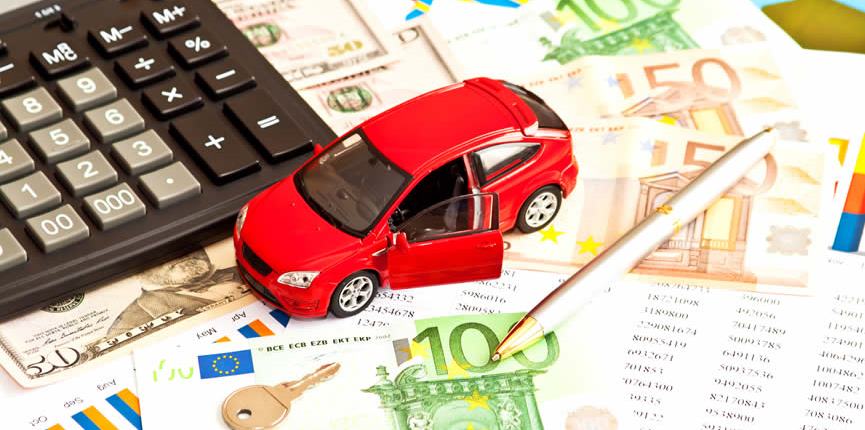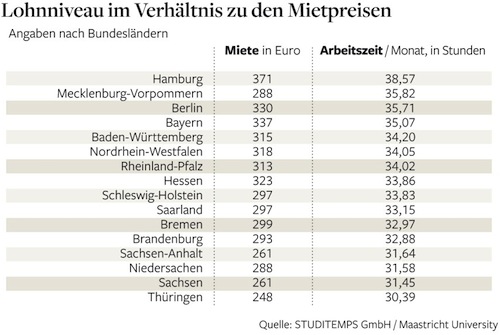
Let’s say you get a company car that costs €40,000 and you live 20 km from your work place. How the taxing works:
Contents
1% Regel
This usually applies for individuals who have free reign over their company car and are allowed to choose whether to use it privately or for work.
1% Regel – 1% of €40,000 = €400 per month = €4800 per year is your Geldwerte Vorteil
In addition to the 1% Regel, there’s the 0.03% or the 0.002% calculated per km per month depending on the distance between where you work and live.
0.03% vs 0.002% Regel
This is calculated in addition to the 1% Regel. It considers that you are getting a Geldwerte Vorteil by driving the company car to work. You can wiggle yourself into a lower taxable income by using the Pendlerpauschale in your tax declaration.
0.03% Regel
If you drive to work with the company car everyday, then the 0.03% Regel would work best for you.
Following with our example:
0.03% of €40,000 = €12 per km per month
You live 20km from work so that becomes = €240 per month = €2880 per year
0.002% Regel
If you drive the car to work less than 15 days a month or 180 days a year, then you can use the 0.002% rule
0.002% of €40,000 = €0.80 per km per month
From home to work gives: €16 per month = €192 per year
So in this case you would have either a Geldwerte Vorteil of:
1% Regel + 0.03% = € 640 per month = € 7,680 per year
OR
1% Regel + 0.002% = €416 per month = € 4,992 per year
Fahrtenbuch:
In this option you record all trips taken as part of work. Most people record the mileage of their car before and after the drive to a client or work. This option works best for those that never/rarely use their company car privately.
In this you need to record:
- the date
- car mileage before and after the trip
- destination
- stops made between origin and destination/ alternative destinations
- reason for the trip (private or work related)
- if for work, company/individual you were going to visit
The calculations in this one are pretty simple, but putting together all that info might take more time than most people are willing to invest. However, it usually gives you a lower amount for the Geldwerte Vorteil than the 1% Regel especially if the car is very expensive and you rarely use it privately.
Following with the example above, the car Cost €40,000. We assume you are allowed to drive 100,000 km per year while you only drive 10,000 km privately
Geldwerte Vorteil = (Cost of Car x Km driven privately)/(Total Kms driven for the year)
= (€40,000 x 10,000KM)/100,000KM
= €4,000 per year
Selbstbeteiligung (Your Contribution)
Some companies will require that you contribute to the car, what they will refer to as “Selbstbeteiligung” and this isn’t necessarily a bad idea.
The Finanzamt considers the company car as a value advantage to you, because you don’t have to buy a car. Therefore, if you make a self-contribution to getting your company car, you reduce the “Geldwerte Vorteil“.
Continuing with the example above, say you have a Selbstbeteiligung of about € 300 per month, this amount is deducted from the Geldwerte Vorteil.
1% Regel + 0.03% = € 640 – € 300 = € 340 per month = € 4,080 per year
OR
1% Regel + 0.002% = € 416 – € 300 = € 116 per month = € 1,392 per year
OR
Fahrtenbuch = €4,000 – € 3600 = € 400 per year
Worth noting is that the Selbstbeteiligung is taxed and deducted from your nett income.
Income Calculation
This is the complex part in this whole discussion, I hope you are stilling following my calculations.
Normal calculation:
Gross Income “Brutto Einkommen” – (Taxes+Social Insurances) = Nett Income “Netto Einkommen“
Take Home Income = Nett Income
With a company car WITHOUT Selbstbeteiligung
(Gross Income + Geldwerte Vorteil) – (Taxes+Social Insurances) = Nett Income
Take Home Income = Nett Income
With Selbstbeteiligung
(Gross Income + Geldwerte Vorteil) – (Taxes+Social Insurances) = Nett Income
Take home = Nett Income – Selbstbeteiligung
Please note this is a very generalized calculation and doesn’t include Freibeträge, loan repayments, company specific deductions etc. Furthermore, it is assumed that the income in this case is above minimum wage. This does NOT apply to “mini-income (€400)” or “midi-income (€800)”.
Advantages
- Most large companies have very good deals with the car manufacturers/importers; thus get the cars at a lower rate than you would if you got the same car yourself from the market
- More often than not, you also get a high-end car, you would usually not buy yourself
- The employer pays for ALL the running costs from the gas, repairs, taxes, insurance everything!
- You get a new one every 3 years. So if you like keeping up with the Joneses/tech, then this is a great option
- It’s a status symbol, in most companies not everyone can get a company, so if you’ve achieved that milestone, you might want to show it off. Some people wait for it their whole career
- Companies create a sense of corporate identity, some companies choose to brand their company cars and this gives the employees some credibility when they show up at a client’s doorstep. However, this is can be more of an advantage for the company than for the individual, furthermore, it restricts use of the car. I doubt you’d want to show up at a wedding with your branded company car if you were working for a funeral service company. I’ve seen people attend family events in a Coca Cola pick-up…..










